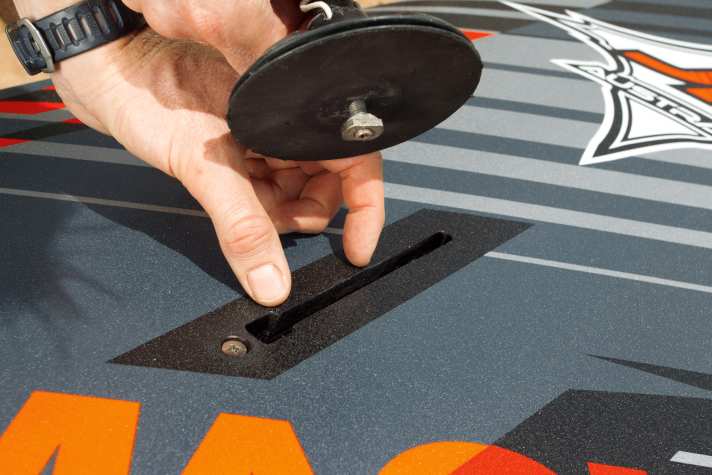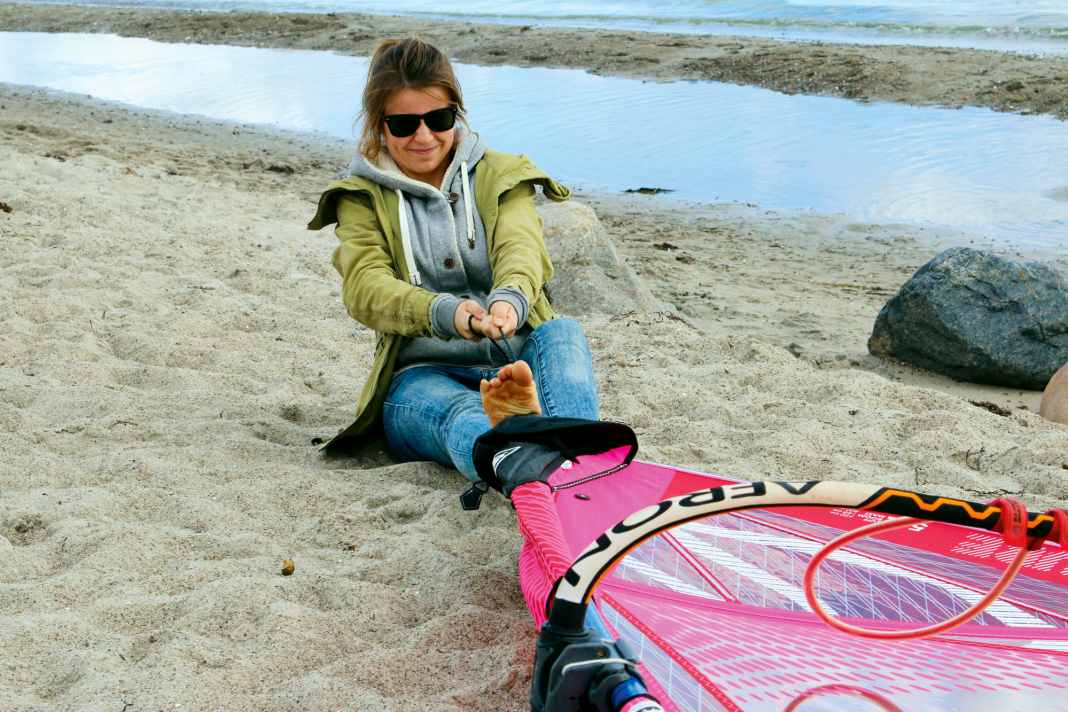





An email pops up in my inbox, subject: "Problems of surfing women". Once again. As a windsurfing editor with 1.90 metres, hands like frying pans and size 48 shoes, it's hard to imagine that someone can't trim their sail on their own, can't make loops small enough and has to mount the boom at head height because the cut-out is too high. If you ask around among women surfers, which we did on a few windy weekends on Fehmarn, you realise that practically all women surfers have these same problems. Unfortunately, there's no getting around the material on the market, so Anne-Kathrin Stevens - experienced windsurfer and ex-worldcupper - reveals her tricks for women to adapt the products orientated towards the broad (male) masses to their personal requirements.
Adjust loop size
The loops being too big is a real perennial issue, with size 40 and below often becoming critical.
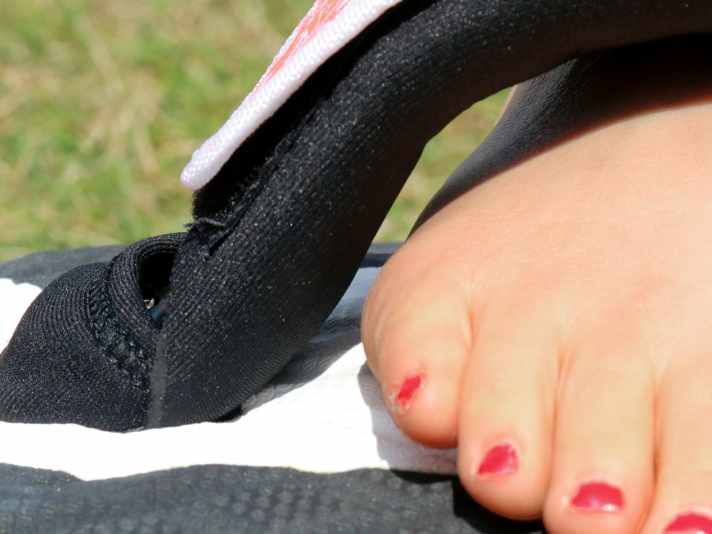
- Hold from above: Most standard loops offer the option of screwing them through holes that are further inwards, allowing them to be adjusted more tightly.
- Lateral support: Very few people realise that many standard loops can be made wider or narrower using asymmetrical plates. If you have so much clearance at the side, you can simply turn the black plastic parts through which the loop is screwed around so that the wide side moves inwards. This makes the loop about five millimetres narrower on each side.
- Different plugs: If the tips mentioned do not help, you can screw the loops into holes that do not belong together.
surf tip: Even if the crotch width is too large, you can adapt to small body sizes by using holes that do not belong together (e.g. front loops all the way to the back, back loops to the front).
Trim the luff...
...is sometimes difficult even for experienced men; women sometimes despair at the high trimming forces. A ratchet extension is certainly the luxury option, but if you prefer something cheaper, you can reduce the trimming forces with a few simple tricks.
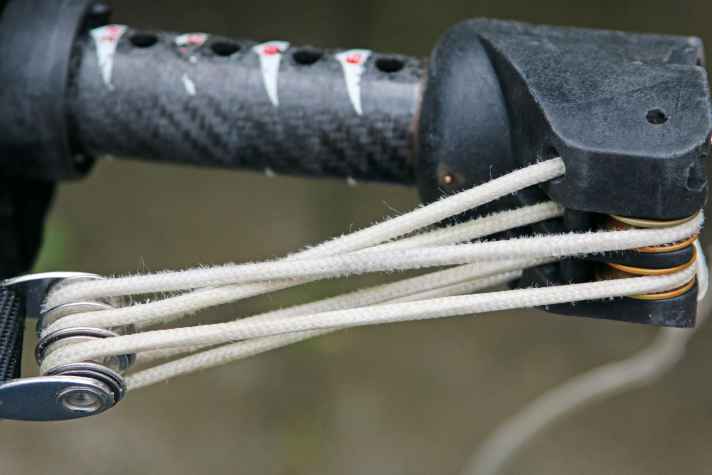
- Roller size and rope: Small plastic pulleys paired with standard ropes (5, left) make even Popeye's forehead sweat. It is much easier with extensions that have large brass rollers and are fitted with a smooth Dyneema rope (5, right).
- Thread correctly: Banal but effective - if the rope runs without crossing over and comes directly from the centre of the trim block to the clamp (7), it is much easier. If you produce a tangle (6), you make life unnecessarily difficult for yourself and also wear out the rope.
The right mast
You can strongly influence sail characteristics, handling and trim forces with the mast you use
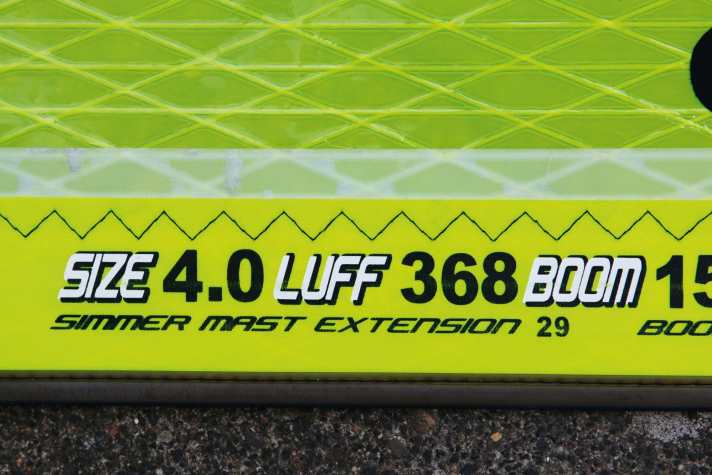
- RDM or SDM mast? Thicker SDM masts (Standard Diameter Mast) make the sail profile firmer and harder, which can be an advantage for heavy riders and large camber sails. Women benefit from the softer sailing feel of the thin skinny masts (RDM, Reduced Diameter Mast), and these masts are also much easier to grip during manoeuvres.
- Mast length: A longer mast is always harder! The picture above shows a sail where two different lengths are possible: A 340 with a 28 mm extension or a 370 mast with a vario top. With the longer mast, a sail always looks noticeably harder than with the shorter mast, and it becomes problematic if the mast sticks out far at the top. When small and light women are hanging from the sail, it is often impossible to create a proper profile and the sail appears bucky and nervous. In addition, the trim forces increase noticeably if the mast protrudes too far at the top!
surf tip: Variotopp up to 20 centimetres is ok, above that you should choose a shorter pole length as a woman!
Outhaul trim
Men need pressure in the bag, women usually prefer good and easy handling. The flatter a sail is trimmed on the boom, the lighter, more playful and less powerful it is in the hand. Especially in manoeuvres, the flatter profile has a more neutral and lighter effect, and women can also pull or push it out of the water more easily when sheeting and water starting.
surf tip: The sail should not touch the boom when it is pulled tight. Nevertheless, care should be taken not to stall the sail profile completely by tensioning the sail extremely flat on the boom.
Mast foot position
Anne-Kathrin's tip: As a woman, you are usually much smaller and therefore ride the boom lower. I've often found that the triangle between base plate, boom height and strap position just doesn't work for us women on many boards. If you ride the base plate too far forward, the distances are simply too big, you can't sheet in the sail properly and hang outwards in the harness. So if you ride your boom far down - which is the case for almost all women - you should try moving the base plate to the rear third of the mast track.
